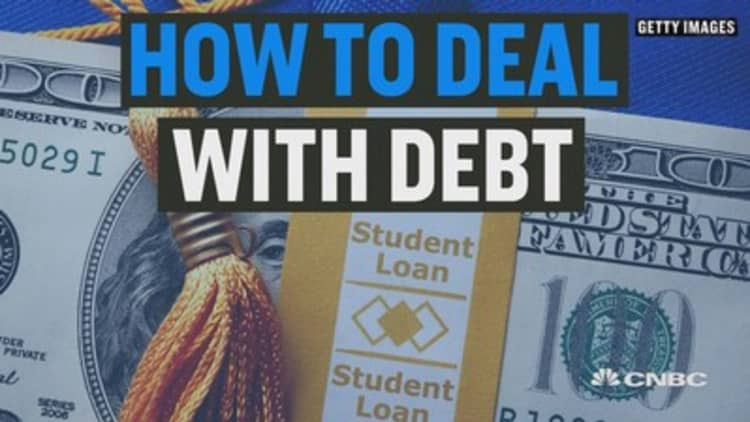The student loan forgiveness program for public servants was not going well. Few borrowers saw debt relief. They blamed the companies that administer the federal loan programs for providing misleading information.
And so last year, Congress created a fund to try to help some of the teachers, nurses and other public servants steeped in debt and derailed by the program.
That remedy, it turns out, is just as troubled as the original program.
Ninety-nine percent of loan forgiveness applications under that new Temporary Expanded Public Service Loan Forgiveness program were rejected between May 2018 and May 2019, according to a new report by the Government Accountability Office.
During that time, more than 50,000 requests came into the U.S. Department of Education and just 661 were approved. And while Congress has allocated $700 million for the fix-it fund, only $27 million has been spent.

Still, if borrowers believe they qualify for the relief they should not give up on trying to get it.
The Public Service Loan Forgiveness Program, established by President George W. Bush in 2007, allows borrowers who pursue government or non-profit work to get their student debt cancelled after a decade of payments.
In 2013, the Consumer Financial Protection Bureau estimated that 1 in 4 American workers could be eligible for forgiveness. But the Bureau later found that a range of student loan industry practices "delay, defer or deny access" to the financial relief.
The federal student loan system is famously complicated. There are some 14 ways to repay your student loans, a web of forgiveness options and a soup of wonky terms like "forbearance" and "deferment."
These are the basic requirements for public service loan forgiveness:
- Your loans must be federal direct loans.
- Your employer must be a government organization at any level, a 501(c)(3) not-for-profit organization or some other type of not-for-profit organization that provides public service.
- By the end, you need to have made 120 qualifying, on-time payments in an income-driven repayment plan or the standard repayment plan.
Most public servants learn too late that their loan type or repayment plan make them ineligible.
Congress's expanded program sought to give a second chance at debt forgiveness to borrowers who were in the wrong repayment plan. Specifically, if they had been deemed ineligible because they were enrolled in a graduated or extended loan repayment plan instead of an income-driven one, they could reapply.
Still, there's a catch: The borrower's most recent payment on whatever plan they were in, as well as their payment made 12 months ago, must have been as much or more than they would have paid on the income-driven repayment plan.
If you were denied from the expanded program because of your repayment plan, you should switch immediately into an income-driven repayment plan and apply again in a year, said Mark Kantrowitz, the publisher of SavingForCollege.com.
More from Personal Finance:
Strong economy could be your ticket to a new job
If you're tired of Medicare Advantage, now is the time to ditch
Retire in paradise: 5 countries where you can live the dream
Other technical reasons that commonly lead to disqualification remain. You still need to have a loan from the federal direct program — not a Federal Family Education Loan, Perkins loan or any kind of private loan.
You still, of course, need to employed by the government or a 501(c)(3) organization. If you're unsure whether your employer qualifies, you can fill out the Department of Education's employer certification form to find out.
The Government Accountability Report found the majority of borrowers rejected from the new program had failed to first apply for Public Service Loan Forgiveness and show that they'd been rejected— one of the requirements for relief from the fix-it fund.
"The process seems confusing for applicants," Kantrowitz said. "They don't understand why they must first apply for Public Service Loan Forgiveness and be rejected when they already know that they are ineligible."

If you meet all the requirements and have been formally rejected from the Public Service Loan Forgiveness Program, you'll want to send an email to FedLoan servicing — the agency that handles the program — as soon as possible.
Include your name and date of birth in your email to TEPSLF@myfedloan.org. Simply state that you request the Education Department reconsider your eligibility.
Kantrowitz recommends also keeping diligent records of your payments. These notes will help you in case your servicer tells you that you've failed to make the 120 qualifying payments.
"Challenge the accuracy of their count," Kantrowitz said. "Be persistent."


